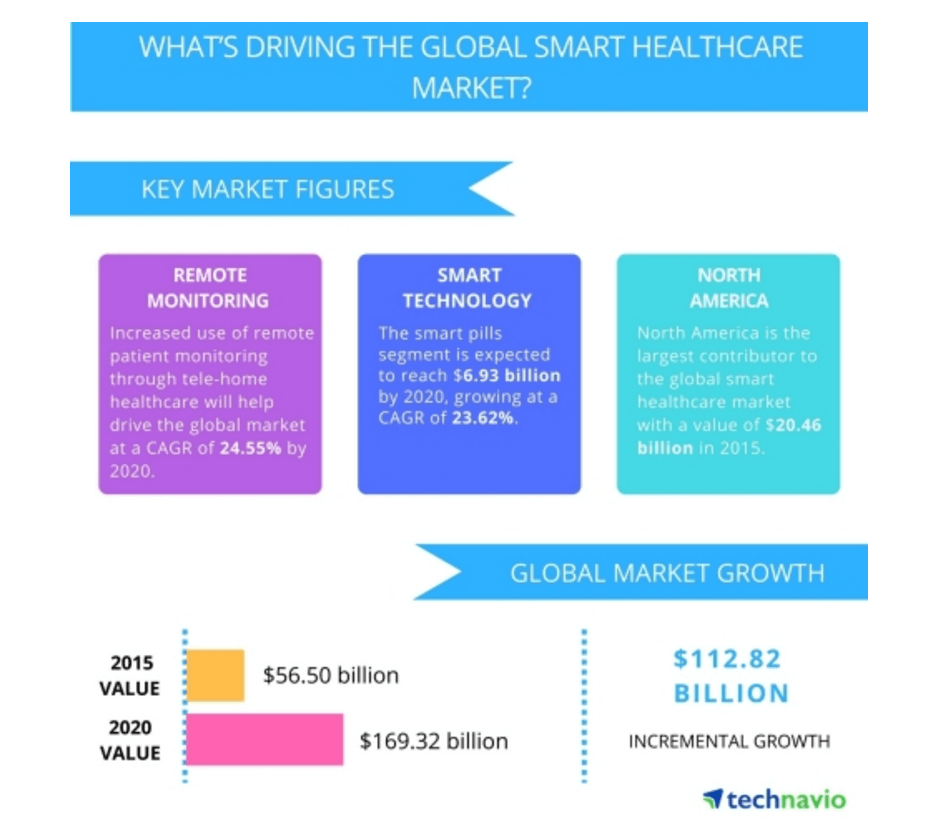An increasing interest in healthcare Internet of Things (IoT) technologies that can foster patient engagement and improve patient management is likely to grow the global smart healthcare market into a $169.32 billion opportunity, according to a new Technavio report.
Although organizations across multiple industries are still wary of the IoT’s potential security flaws, 71 percent of cross-industry enterprises are currently developing their IoT data stores, adds a survey by 451 Research, and the next 12 months are likely to bring a 33 percent increase in IoT infrastructure spending.
Healthcare providers have expressed hesitation about the day-to-day mechanics of collecting and analyzing data from Internet of Things devices, but the use cases for doing so are becoming increasingly clear.
Technavio predicts that the IoT will become a critical tool for remote patient monitoring, especially as the population ages, and that smarter devices will combine with the consumerization of healthcare to produce meaningful opportunities to achieve ROI.
Many enterprises are already incorporating the IoT into their daily activities. The 451 Research survey found that 68 percent of respondents are using IoT data to optimize operations, while 42 percent are using connected device data to create new products and services.
“When it comes to IoT adoption, pragmatism rules,” said Laura DiDio, Research Director at 451 Research and lead author of the study. “The survey data indicates enterprises currently use IoT for practical technology purposes that have an immediate and tangible impact on daily operational business efficiencies, economies of scale and increasing the revenue stream.”

Organizations are also preparing for the opportunities of the future by gathering big data and building out their analytics capabilities.
Seventy-one percent of enterprises are now collecting IoT data, and 90 percent are planning to increase their spending on the IoT within the next year.
IoT devices in healthcare have huge potential in the field of analytics and population health management because of the large and diverse data they can capture.
The FTC has estimated there will be over 50 billion devices connected to the internet by the year 2020. These devices such as wearables, skin sensors, ingestible sensors, and home monitoring tools are capable of generating new pools of data that will allow providers to build models for patient monitoring, population health management, and chronic disease care.
As more and more devices start to transition the Internet of Things into the Internet of Everything, healthcare organizations may have the opportunity to join their counterparts in other industries by leveraging these new big data sources for operational and clinical improvements.
With up to $7 trillion on the line for organizations that can deliver, generate, and leverage actionable insights into the clinical workflow, investing quickly in the IoT and IoE may help providers gain a competitive edge in a lucrative marketplace.